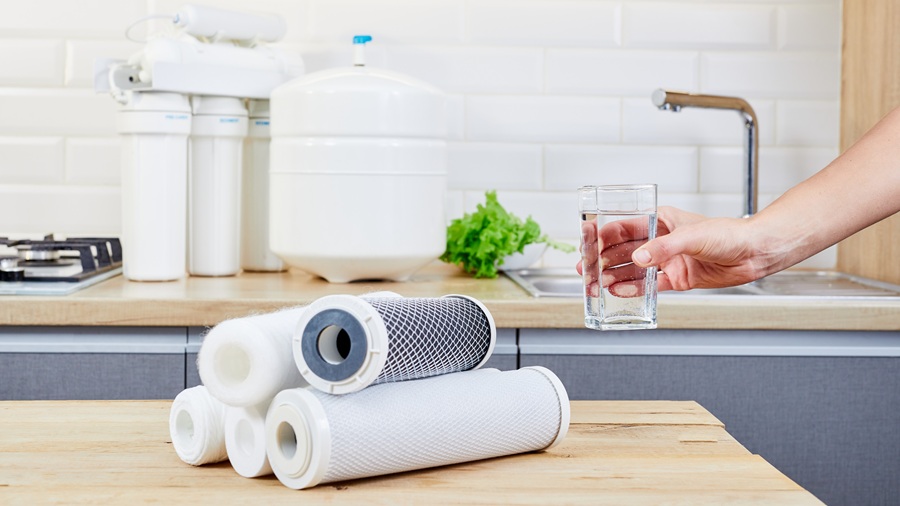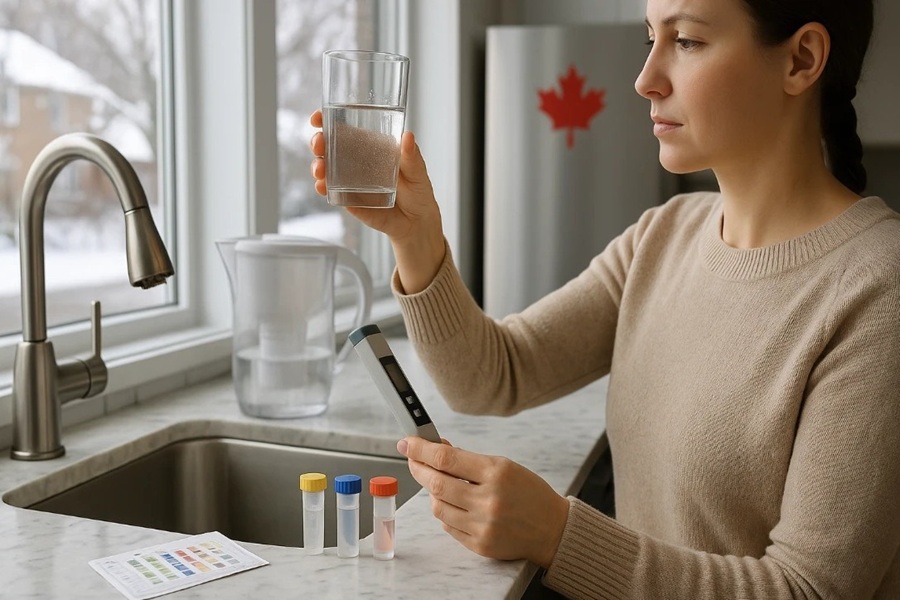Is your Canadian tap water really safe? Hidden contaminants
Regular water testing helps identify localized issues and protects vulnerable populations from the cumulative effects of harmful substances
IN CANADA, WHERE people have an abundance of freshwater reserves, such as the Great Lakes, Rocky Mountain springs, and large underground water reservoirs, which feed households in nearly all Canadian provinces. Municipal systems process the water to Health Canada standards, yet overgrown pipes, water run-offs, and industries may add impurities that may leak through. To determine what is actually in your tap, begin with a professional water analysis. This will show the unknown dangers affecting the health, life of your appliances. Superior Water Purification offers advanced water testing and custom purification to identify impurities and propose efficient Canadian-approved solutions.
The Hidden World of Water Impurities
The water sources in Canada are experiencing challenges that are specific to the geography and human activities. In cities such as Toronto or Vancouver, old lead lines put in place before the 1970s drain metals into the system, whereas in rural areas , the nitrate of fertilizers is seeping into systems. Even water that has been treated by the facilities where chlorine is used to disinfect water may develop byproducts over the distribution systems. The basis is a detailed water analysis, whereby the sampling may be done on the basis of kitchen faucets, wells, or rainwater systems against the Canadian Drinking Water Quality Guidelines.

Common Impurities Revealed by Testing
Water analysis in Canada frequently uncovers impurities that, while regulated, can exceed safe limits in specific locales. These vary by region but share potential to harm if unaddressed. Here are key ones often detected:
- Chlorine: Essential for killing bacteria in municipal treatment plants, it leaves residual levels that cause a chemical aftertaste and form trihalomethanes—compounds linked to bladder cancer risks.
- Lead: Prevalent in older Canadian homes, this metal dissolves during stagnation, contributing to learning disabilities in kids and hypertension in adults.
- Hard Minerals: Calcium and magnesium dominate in hard water zones, leading to scale in kettles, reduced soap lather, and efficiency drops in heaters that hike energy costs for Canadian winters.
- Nitrates: From intensive agriculture, they contaminate wells, posing “blue baby” risks to infants and potential cancer links, with levels monitored closely in farming provinces.
- Pesticides and Herbicides: Runoff from orchards in the Okanagan or grain belts carries atrazine or glyphosate into rivers, affecting groundwater and tied to hormonal disruptions per Environment Canada reports.
Solutions for Pure Water in Canada
The process of solving water quality problems starts with professional analysis, which often includes sample collection on various taps, laboratory analysis of the sample on the parameters such as pH, metals, and microbes, and a thorough report that will be compared against the standards of Health Canada. According to the outcomes, purification systems may be customized to meet the requirements. Here are effective solutions offered by Superior Water Purification to combat common contaminants:
- Water Softeners: The ion exchange systems are those that eliminate the presence of calcium and magnesium to avoid the deposition of the substance in the pipes and appliances. They are perfect in hard water areas such as Ontario or Alberta and they also boost equipment life and reduce the energy bills by a quarter.
- Reverse Osmosis (RO): RO systems will remove heavy metals (lead, arsenic), nitrates, and PFAS using a semi-permeable membrane to deliver pure and great-tasting water. Ideal for an urban home or business in Vancouver or Toronto.
- Carbon Filtration: The activated carbon filters are used to eliminate chlorine, VOCs and odors, enhancing taste and safety. They can be used at home or in the business, in Halifax kitchens or restaurants of Winnipeg.
- UV Disinfection: UV systems eliminate bacteria and viruses without using chemicals, which are also suitable in rural wells or off-grid cabins to ensure that water is microbially safe.
- Whole-House Filtration: These are large-scale systems that integrate several technologies to treat all the contaminants simultaneously, and this is suitable in the large homes or in commercial use.
These systems reduce bottled water use, saving $200-$500 annually and cutting plastic waste, aligning with Canada’s sustainability goals. By combining testing with advanced purification, Canadians can enjoy crystal-clear water that supports health, protects homes, and enhances daily life.

Frequently Asked Questions About Water Purity
- Why should I test my water if it’s municipally treated?Municipal treatment meets general standards, but aging pipes or long distribution networks can introduce lead, chlorine byproducts, or bacteria. Testing ensures your tap water is safe for your specific home.
- What’s the difference between RO and carbon filtration?Reverse osmosis removes dissolved solids like metals and nitrates, while carbon filtration targets chlorine, odors, and organic compounds. Combining both often provides the best results.
- How do I know which system I need?A free water test from Superior Water Purification identifies contaminants, and their experts recommend solutions tailored to your home or business, budget, and regional water profile.
Annual water testing—or more frequently after events like floods or pipeline repairs—helps identify localized issues and protects vulnerable populations, such as children and the elderly, from the cumulative effects of harmful substances. The consequence of not analyzing would be progressive exposure, particularly in residential houses where members of the vulnerable populations, such as children or the elderly, may be found, and contaminants may build up with time without sounding an alarm.

